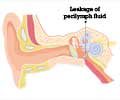Taking a ride on that giant wheel, or that amazing view of the valley from the peak, are things that people with vertigo usually miss out on.
If fear of vertigo keeps you away from giant wheels at amusement parks and breath-taking views from a height, then scientists suggest some simple head movements that will keep dizziness at bay and will help you join the fun!
Till date, scientists don't know which of the many available treatments for vertigo works best. Now, a review of study data by Harvard Women's Health Watch has found the most effective therapy is a safe, easy sequence of head movements.Vertigo is not just the average dizzy spell, it's actually a false sense of motion-a feeling of tilting, spinning, or swaying when you're not actually moving. It's often accompanied by nausea, vomiting, and sweating.
Benign paroxysmal positional vertigo (BPPV), the most common form, occurs mainly in people ages 60 and over, mostly women, and is triggered by certain changes in position, particularly head position-such as turning in bed or tilting the head backward to look up.
BPPV results from a malfunction of the vestibular (balance) system, which is housed in an inner ear structure called the labyrinth. The malfunction that causes BPPV can have several causes, including age-related changes in the inner ear, infection, and head injury.
It is believed that BPPV occurs when calcium carbonate crystals become dislodged from part of the vestibular system and fall into one of the semicircular canals (part of the inner ear), interfering with normal movement of the fluid in the inner ear and disrupting signals to the brain. This results in vertigo when the head shifts.
Harvard Women's Health Watch reports on data showing that a series of head maneuvers can relieve BPPV by moving the dislodged crystals out of the semicircular canal and into the vestibule, where they are absorbed.
Advertisement
The study is reported in the latest issue of Harvard Women's Health Watch.
Advertisement
TAN/M














